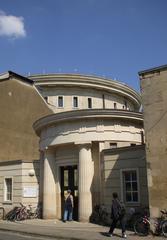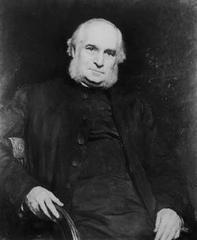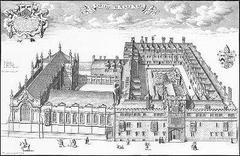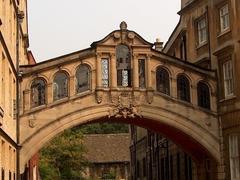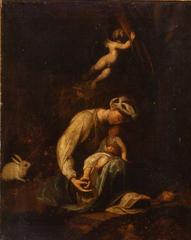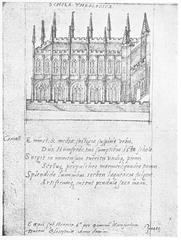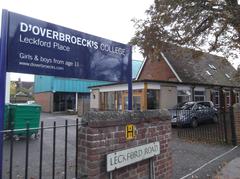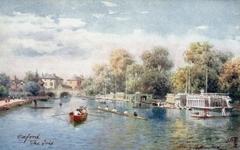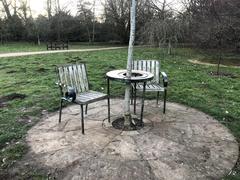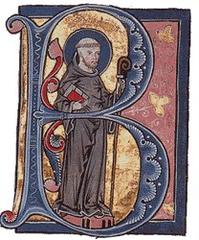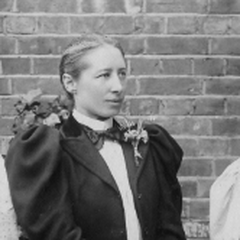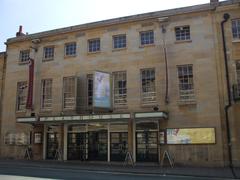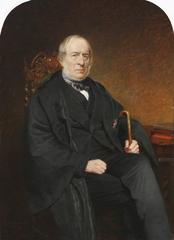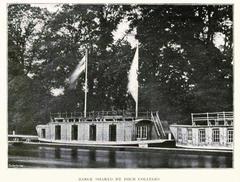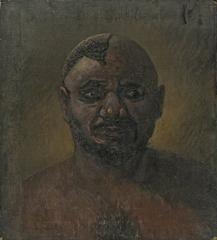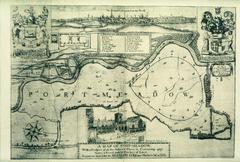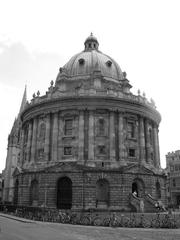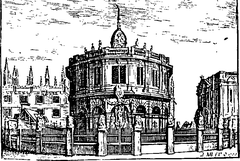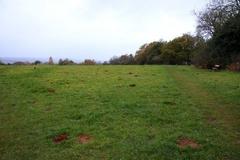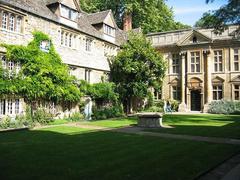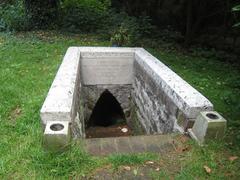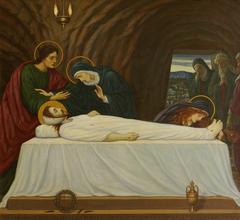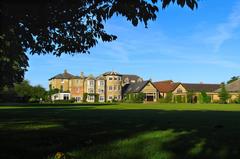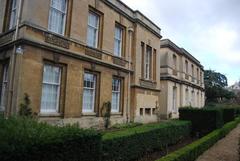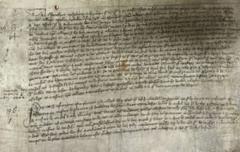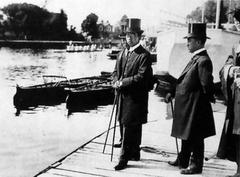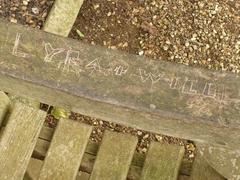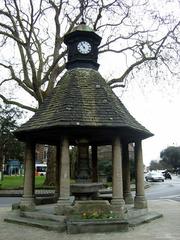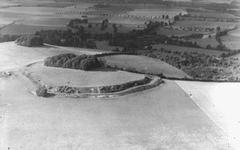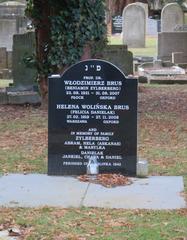Visiting Devil’s Quoits: Hours, Tickets, and Historical Insights
Date: 01/08/2024
Introduction
The Devil’s Quoits, an ancient stone circle located near Stanton Harcourt in Oxfordshire, United Kingdom, is a captivating site that dates back to the late Neolithic period, approximately 3000 BCE to 2000 BCE (Historic England). This prehistoric monument, originally comprising a henge and a stone circle, offers a significant glimpse into the ceremonial and ritualistic practices of early human societies. The construction of the Devil’s Quoits required immense labor and coordination, with stones weighing several tons transported from local sources using primitive tools and techniques. The precise alignment of these stones reflects a sophisticated understanding of astronomy and geometry among the Neolithic people (English Heritage).
The historical significance of the Devil’s Quoits is profound, as it provides invaluable insights into the social and religious practices of Neolithic and Bronze Age communities. The site’s alignment with solstices suggests its use for astronomical observations, similar to other renowned monuments like Stonehenge. The presence of burial mounds and archaeological features in the vicinity indicates its long-standing importance as a focal point for ritual activities (British Archaeology). Over the centuries, the site has undergone periods of neglect and destruction, most notably during the construction of a World War II airfield. However, extensive restoration efforts in the late 20th and early 21st centuries have returned the Devil’s Quoits to its former glory, allowing visitors to appreciate its historical and cultural significance once more (Historic England).
Today, the Devil’s Quoits serves as an important cultural and educational resource, attracting visitors, researchers, and students interested in prehistoric archaeology and ancient history. The site not only contributes to the local cultural heritage of Oxfordshire but also plays a crucial role in preserving Britain’s prehistoric heritage for future generations (Oxford Archaeology).
Table of Contents
- [Ancient Origins and Construction](#ancient-origins-and-constructionancient-origins-and-construction)
- [Historical Significance](#historical-significancehistorical-significance)
- [Rediscovery and Restoration](#rediscovery-and-restorationrediscovery-and-restoration)
- [Visiting Information](#visiting-informationvisiting-information)
- [Visiting Hours and Tickets](#visiting-hours-and-ticketsvisiting-hours-and-tickets)
- [Travel Tips](#travel-tipstravel-tips)
- [Nearby Attractions](#nearby-attractionsnearby-attractions)
- [Accessibility](#accessibilityaccessibility)
- [Cultural and Educational Impact](#cultural-and-educational-impactcultural-and-educational-impact)
- [Modern Interpretations and Theories](#modern-interpretations-and-theoriesmodern-interpretations-and-theories)
- [Preservation and Future Research](#preservation-and-future-researchpreservation-and-future-research)
- [Frequently Asked Questions (FAQ)](#frequently-asked-questions-faqfrequently-asked-questions-faq)
- [Nearby Attractions and Local Culture in Oxfordshire](#nearby-attractions-and-local-culture-in-oxfordshirenearby-attractions-and-local-culture-in-oxfordshire)
- [Nearby Attractions](#nearby-attractionsnearby-attractions)
- [Local Culture](#local-culturelocal-culture)
- [Conclusion](#conclusionconclusion)
- [References](#referencesreferences)
Ancient Origins and Construction
The Devil’s Quoits is a prehistoric stone circle located near Stanton Harcourt in Oxfordshire, United Kingdom. This ancient monument dates back to the late Neolithic period, around 3000 BCE to 2000 BCE. The site originally consisted of a henge—a circular earthwork enclosure—and a stone circle. The henge is characterized by a ditch and an external bank, which were typical features of ceremonial and ritual sites during this era (Historic England).
Archaeological evidence suggests that the construction of the Devil’s Quoits involved significant labor and coordination. The stones, some weighing several tons, were likely transported from local sources using primitive tools and techniques. The precise alignment of the stones indicates a sophisticated understanding of astronomy and geometry among the Neolithic people. The site was possibly used for ceremonial purposes, including rituals related to the agricultural calendar and celestial events (English Heritage).
Historical Significance
The Devil’s Quoits holds considerable historical significance as it provides insights into the social and religious practices of Neolithic communities. The site’s alignment with the solstices suggests that it may have been used for astronomical observations, similar to other contemporary monuments like Stonehenge. The presence of burial mounds and other archaeological features in the vicinity indicates that the area was a focal point for ritual activities over an extended period (British Archaeology).
During the Bronze Age, the site continued to be of importance, as evidenced by the addition of burial mounds and other structures. The continuity of use underscores the site’s enduring significance in the cultural landscape of prehistoric Britain. The Devil’s Quoits is part of a broader network of ceremonial sites that reflect the complex social and religious dynamics of ancient communities (Oxford Archaeology).
Rediscovery and Restoration
The Devil’s Quoits underwent significant changes over the centuries, including periods of neglect and destruction. By the 19th century, many of the stones had been removed or buried, and the site was largely forgotten. The construction of a World War II airfield further disrupted the landscape, leading to the loss of several stones and the infilling of the henge ditch (Historic England).
In the late 20th century, efforts to restore the Devil’s Quoits began in earnest. Archaeological excavations in the 1940s and 1950s revealed the original layout of the site, providing valuable information for restoration efforts. In the 2000s, a comprehensive restoration project was undertaken, involving the re-erection of the stones and the reconstruction of the henge. This project aimed to restore the site to its original appearance, based on archaeological evidence and historical records (English Heritage).
Visiting Information
Visiting Hours and Tickets
The Devil’s Quoits is accessible year-round, although it is always advisable to check for any seasonal variations or special closures. There are no ticket fees to visit the site, making it an ideal location for a budget-friendly historical excursion. For the most up-to-date information on visiting hours, you can visit the Oxfordshire Historical Sites website.
Travel Tips
To reach the Devil’s Quoits, you can drive to Stanton Harcourt, which is well-connected by local roads. Ample parking is available near the site. Public transport options include local buses from Oxford or Witney, with stops close to Stanton Harcourt.
Nearby Attractions
While visiting the Devil’s Quoits, consider exploring other nearby historical sites. The Rollright Stones and the North Leigh Roman Villa are within driving distance and offer a deeper dive into the region’s rich historical tapestry.
Accessibility
The site is partially accessible to visitors with mobility issues. The terrain is uneven, and some areas may be challenging to navigate for those using wheelchairs or with limited mobility. It is recommended to check accessibility details in advance.
Cultural and Educational Impact
Today, the Devil’s Quoits serves as an important cultural and educational resource. The site attracts visitors, researchers, and students interested in prehistoric archaeology and ancient history. Interpretive panels and guided tours provide insights into the site’s history, construction, and significance, enhancing public understanding and appreciation of this ancient monument (Oxford Archaeology).
The Devil’s Quoits also plays a role in local cultural heritage, contributing to the identity and historical narrative of the Oxfordshire region. The site’s restoration has helped to preserve an important part of Britain’s prehistoric heritage, ensuring that future generations can learn about and appreciate the achievements of Neolithic communities (British Archaeology).
Modern Interpretations and Theories
Modern interpretations of the Devil’s Quoits continue to evolve as new archaeological techniques and technologies are applied to the study of the site. Recent geophysical surveys and excavations have provided new insights into the construction methods and usage of the site. For example, analysis of pollen samples and soil composition has shed light on the environmental conditions and agricultural practices of the Neolithic period (Historic England).
Theories about the site’s purpose and significance also continue to develop. Some researchers suggest that the Devil’s Quoits may have served as a center for social gatherings and communal activities, in addition to its ceremonial functions. The site’s alignment with celestial events supports the idea that it played a role in the agricultural calendar, helping ancient communities to track the seasons and plan their farming activities (English Heritage).
Preservation and Future Research
The preservation of the Devil’s Quoits is an ongoing concern, requiring careful management and conservation efforts. The site is protected as a Scheduled Ancient Monument, ensuring that it is legally safeguarded from development and other threats. Conservation work focuses on maintaining the structural integrity of the stones and the henge, as well as managing the surrounding landscape to prevent erosion and other forms of damage (Historic England).
Future research at the Devil’s Quoits is likely to focus on further understanding the site’s construction, usage, and significance. Advances in archaeological methods, such as remote sensing and 3D modeling, offer new opportunities to explore the site in greater detail. Collaborative research projects involving universities, heritage organizations, and local communities will continue to enhance our knowledge of this remarkable prehistoric monument (Oxford Archaeology).
Frequently Asked Questions (FAQ)
Q: What are the visiting hours for the Devil’s Quoits? A: The site is generally accessible year-round. Check the Oxfordshire Historical Sites website for any seasonal changes or closures.
Q: Are there any ticket fees to visit the Devil’s Quoits? A: No, there are no ticket fees to visit the site.
Q: How can I get to the Devil’s Quoits? A: You can drive to Stanton Harcourt, where there is ample parking. Local buses from Oxford or Witney also provide convenient access.
Q: Is the Devil’s Quoits accessible for visitors with mobility issues? A: The site has uneven terrain and may be challenging for visitors with mobility issues. It is best to check accessibility details in advance.
Nearby Attractions and Local Culture in Oxfordshire
Nearby Attractions
Blenheim Palace
Located approximately 15 miles from Devil’s Quoits, Blenheim Palace is a UNESCO World Heritage Site and the birthplace of Sir Winston Churchill. This magnificent Baroque palace is set in over 2,000 acres of parkland, designed by the renowned landscape architect Capability Brown. Visitors can explore the opulent state rooms, the Churchill Exhibition, and the beautiful gardens. The palace also hosts various events throughout the year, including concerts, exhibitions, and seasonal festivities. For more information, visit the Blenheim Palace website.
Oxford University
Just 10 miles from Devil’s Quoits, the University of Oxford is one of the oldest and most prestigious universities in the world. The university’s historic colleges, such as Christ Church, Magdalen, and Balliol, are architectural marvels and offer guided tours. The Bodleian Library, the Ashmolean Museum, and the Radcliffe Camera are must-visit sites within the university. The city of Oxford itself is rich in history, with its cobbled streets, historic pubs, and vibrant cultural scene. More details can be found on the University of Oxford website.
Cotswold Wildlife Park and Gardens
Situated about 20 miles from Devil’s Quoits, the Cotswold Wildlife Park and Gardens is a family-friendly attraction that houses over 260 species of animals. The park is set in 160 acres of landscaped parkland and features a variety of exhibits, including the Madagascar Walkthrough, the Reptile House, and the Big Cat Enclosure. The gardens are beautifully maintained and offer a peaceful retreat. The park also has a children’s farmyard and adventure playground. Visit the Cotswold Wildlife Park website for more information.
Kelmscott Manor
Kelmscott Manor, located about 25 miles from Devil’s Quoits, was the country home of William Morris, the famous designer, poet, and founder of the Arts and Crafts Movement. The manor is a Grade I listed farmhouse and is preserved as it was during Morris’s time. Visitors can explore the house, which is filled with Morris’s original furniture, textiles, and artworks, as well as the beautiful gardens and the nearby River Thames. For more details, visit the Kelmscott Manor website.
Local Culture
Traditional Events and Festivals
The local culture around Devil’s Quoits is rich with traditional events and festivals that reflect the area’s history and community spirit. One of the most notable events is the Oxfordshire Artweeks, an annual festival that celebrates local artists and craftspeople. During the festival, artists open their studios to the public, and various exhibitions and workshops are held across the county. More information can be found on the Oxfordshire Artweeks website.
Another significant event is the Blenheim Palace Flower Show, held annually in June. This event showcases stunning floral displays, gardening workshops, and a variety of stalls selling plants, garden accessories, and local produce. The show attracts gardening enthusiasts from all over the country. Details are available on the Blenheim Palace Flower Show website.
Local Cuisine
The culinary scene around Devil’s Quoits is diverse and offers a range of traditional and contemporary dining experiences. The area is known for its traditional English pubs, many of which serve locally sourced food and ales. The Trout Inn, located in Wolvercote, is a historic pub that dates back to the 17th century and offers a picturesque riverside setting. The menu features classic British dishes made with locally sourced ingredients. More information can be found on the Trout Inn website.
For a more contemporary dining experience, The Oxford Kitchen in Summertown offers modern British cuisine with a focus on seasonal ingredients. The restaurant has received numerous accolades for its innovative dishes and exceptional service. Visit the Oxford Kitchen website for more details.
Local Markets
Local markets are an integral part of the community around Devil’s Quoits and offer a glimpse into the area’s culture and traditions. The Oxford Covered Market, located in the heart of Oxford, is a historic market that has been operating since 1774. The market features a variety of stalls selling fresh produce, meats, cheeses, baked goods, and artisanal products. It is a great place to sample local delicacies and purchase unique souvenirs. More information can be found on the Oxford Covered Market website.
The Witney Market, held every Thursday and Saturday, is another popular market in the area. Witney is known for its woolen blankets, and the market offers a range of local products, including fresh produce, crafts, and textiles. The market has a lively atmosphere and is a great place to experience the local culture. Visit the Witney Market website for more details.
Arts and Crafts
The area around Devil’s Quoits has a rich tradition of arts and crafts, influenced by the Arts and Crafts Movement founded by William Morris. The Oxfordshire Craft Guild is a collective of local artisans who create a variety of handmade products, including pottery, textiles, jewelry, and woodwork. The guild hosts exhibitions and sales throughout the year, providing an opportunity to purchase unique, handcrafted items. More information can be found on the Oxfordshire Craft Guild website.
The area is also home to several art galleries, such as the Modern Art Oxford, which showcases contemporary art exhibitions and hosts various events and workshops. The gallery is located in the city center and is a hub for the local art community. Visit the Modern Art Oxford website for more details.
Conclusion
Visiting the Devil’s Quoits offers an unparalleled journey into the depths of prehistoric Britain, providing a unique opportunity to connect with the ancient past. The meticulous restoration efforts have preserved this significant site, allowing it to continue serving as a beacon of historical and cultural understanding. As you explore the site, you can appreciate the immense labor and sophisticated knowledge that went into its construction, as well as the rich tapestry of social and religious practices it reflects (Historic England).
Beyond the Devil’s Quoits, the surrounding Oxfordshire area is replete with additional historical and cultural attractions, from the grandeur of Blenheim Palace to the academic prestige of Oxford University. Each site offers its unique insights and experiences, enhancing your overall understanding of the region’s rich heritage. The local culture, with its vibrant festivals, traditional cuisine, and thriving arts and crafts scene, further enriches your visit, providing a holistic and immersive experience (CityDays).
In conclusion, the Devil’s Quoits stands as a testament to the ingenuity and cultural richness of our ancestors. Its preservation and continued study ensure that we can continue to learn from and appreciate this remarkable site. Whether you are a history enthusiast, a cultural explorer, or simply seeking a unique travel experience, a visit to the Devil’s Quoits and its surrounding attractions promises to be both enlightening and memorable. For more information on planning your visit, explore related posts, and stay updated with local events, be sure to follow relevant sources and communities (Oxford Archaeology).
References
- Historic England. (n.d.). Retrieved from https://historicengland.org.uk
- English Heritage. (n.d.). Retrieved from https://www.english-heritage.org.uk
- British Archaeology. (n.d.). Retrieved from https://www.archaeology.co.uk
- Oxford Archaeology. (n.d.). Retrieved from https://oxfordarchaeology.com
- CityDays. (n.d.). Retrieved from https://citydays.com/places/devils-quoits/
- Dark Oxfordshire. (n.d.). Retrieved from https://www.darkoxfordshire.co.uk/explore/the-devils-quoits/




